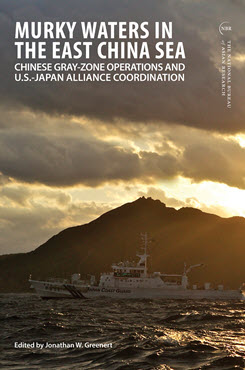NBR Special Report no. 90
China’s Gray-Zone Capabilities in the East China Sea
This essay explores the increasing capabilities of China capabilities to conduct gray-zone operations in the East China Sea.
EXECUTIVE SUMMARY
MAIN ARGUMENT
Since 2012, China has developed a range of capabilities for gray-zone operations, including “conventional” capabilities such as the China Coast Guard and the People’s Armed Forces Maritime Militia and “nonconventional” capabilities, including information operations, cyber, space, and electronic warfare. These are increasingly enabled by China’s development of emerging technologies—artificial intelligence (AI), algorithms, and big data analytics. Chinese military concepts such as algorithm confrontation, which holds that the side with the data advantage dominates the conflict, and People’s Liberation Army (PLA) organizational reforms such as the creation of the Strategic Support Force emphasize the integration of information operations, space, and cyber capabilities into military operations. China will continue to incorporate these capabilities, potentially augmenting Beijing’s ability to achieve its objectives for gray-zone operations: asserting administrative control over disputed maritime territory, controlling access to energy and fishing resources, influencing regional rules and norms on territorial claims, and testing Japan’s resolve to respond.
POLICY IMPLICATIONS
- Future gray-zone operations will capitalize on PLA efforts to integrate information operations, cyber, and space technologies, as well as China’s military-civilian fusion strategy, and will potentially include more coordination between organizations such as the Strategic Support Force and China’s civilian space agencies. The integration of these capabilities, if successful, will likely enhance China’s ability to conduct gray-zone operations in the East China Sea.
- China’s future gray-zone actions will likely feature more emerging technologies such as AI and associated data-processing capabilities to enhance maritime intelligence, data collection, and surveillance.
- Which nonconventional capabilities China chooses to use in future East China Sea gray-zone operations will depend on Beijing’s objectives and perception of escalation risk, particularly if it deploys newer, emerging capabilities that are currently untested in such operations.
Kristen Gunness is a Senior Policy Researcher in the RAND Corporation’s Washington, D.C., Office.



